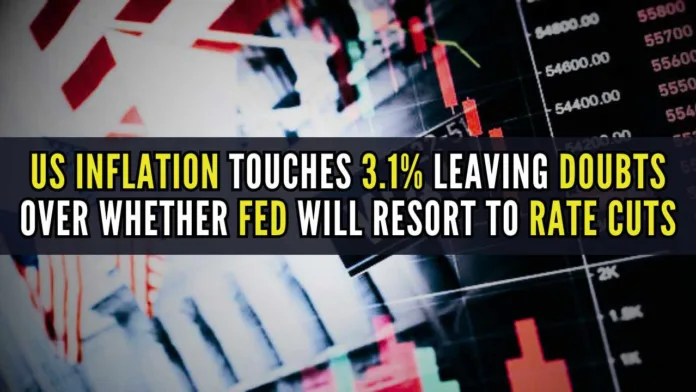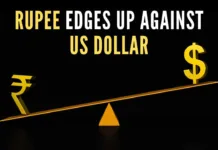
US inflation, more stubborn than expected, edged down to 3.1% in January
Inflation in the US, which cooled in January, rose again exceeding Wall Street’s expectations, signaling that the Federal Reserve might hold back its reported move to cut interest rates.
The Fed halted the rate hike after a 52-week-long fight to rein in the price pressures on the economy by November last year.
Federal Reserve Chairman Jerome Powell has aimed to rein in inflation at 2 percent to start rate cuts. But inflation has stabilised at a 3 percent level prompting him to hold back.
Inflation probably rose with increased spending by US citizens during Thanksgiving day ($ 9.8 billion and $6.5 billion on cyber sales) who downloaded their hoarded cash and savings from the pandemic days onto online platforms. This increased the price pressures on the economy.
The Labor Department reported Tuesday that consumer prices rose 3.1 percent in January from a year earlier, versus a December gain of 3.4 percent. That marked the lowest reading since June, media reports said.
The consumer-price index was still higher than the predicted 2.9 percent, a disappointment for investors who hope the Fed will cut rates sooner rather than later. Rate cuts tend to help stock prices by boosting economic activity and reducing competition from bonds for investor dollars.
US treasury bonds offer a fixed return of 6.5 percent and therefore are more popular and safer for investors to put their money, and that largely hits the stock market.
Stocks fell and treasury bond yields, especially the 10-year paper, rose after the release. Interest-rate futures, which before Tuesday’s report implied the central bank would probably begin cutting rates by its May meeting, now suggest a June start date is more likely.
Where the Fed could go from here:
Investors believed that Fed cuts were imminent and that fuelled the rally in stocks. The Dow Jones Industrial Average on Monday hit its 12th record close of 2024. But Tuesday’s inflation report reveals that Fed officials are dismissive of such expectations on rate cuts. And this could provide ammunition to officials who want to wait until the middle of the year before cutting interest rates.
Some Fed officials have suggested that the pace of improvement over the past six months might overstate underlying progress in containing price pressures, media reports said.
[With Inputs from IANS]
PGurus is now on Telegram. Click here to join our channel and stay updated with all the latest news and views
For all the latest updates, download PGurus App.










